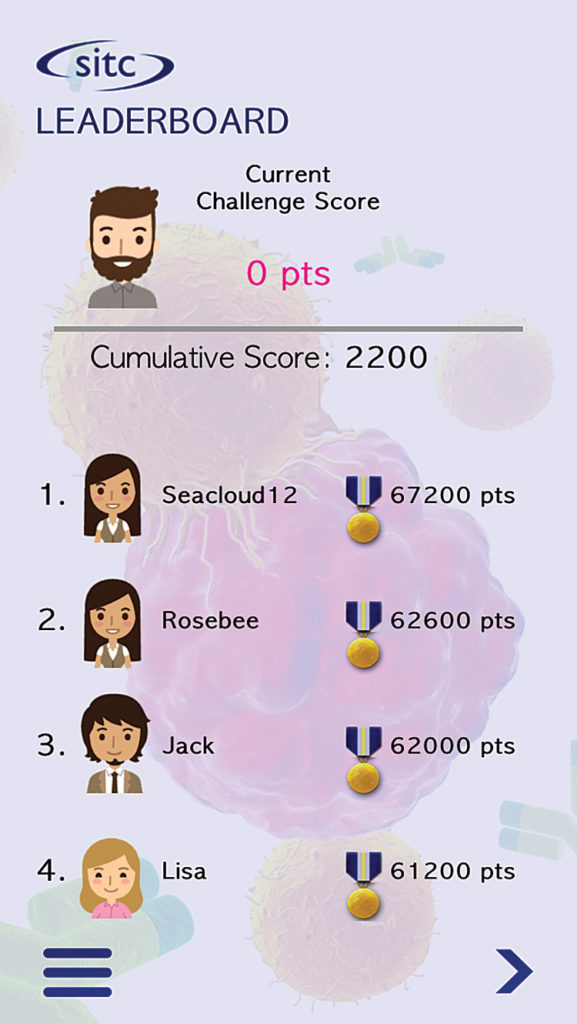Gaming is everywhere—these days people of all ages and genders are participating in some activity that would constitute “gaming.” More than 150 million Americans play video games and 42% play games regularly (at least three hours a week). Four out of five U.S. households own a video game device. And it may surprise you to learn that the majority of “gamers” are not adolescent males—the average age of game players is 35, and three out of four gamers are over the age of 18. Almost half of all gamers are women.1
And over the past few years, marketers have turned to games as a way to better engage with HCPs and patients. In case you aren’t aware, the process of adapting aspects of gaming to activities that are not traditionally game-related is called “gamification.”2 In his book, The Gamification of Learning and Instruction: Game-based Methods and Strategies for Training and Education (Pfeiffer, 2012), Karl M. Kapp argues that “…traditional methods of learning are losing favor, as most page-turning e-learning modules are boring to people who have grown up playing video games for an average of 12 years. Time and attention of learners is limited, and learning professionals must focus on providing an engaging and goal-oriented solution to the training and teaching dilemma. A focus on gamification increases engagement, relevance, and immersion and assists with the transfer of learning to the actual situation.”
Gamification includes three main elements: Abstraction, mechanics, and interfaces. By abstracting real-world scenarios into a series of simplified challenges, participants are able to learn specific tasks, skills, or information sequentially—moving from less complex to more complex challenges. Mechanics of gamification involve developing a process to assess mastery of a skill before progress to the next level is allowed, to provide positive and negative feedback, and to supply encouragement to the participant for learning new skills. Game interfaces are designed to promote engagement and a sense of fun, motivating continued and persistent participation.2
Translating Healthcare Into Games
Gamification and gaming challenges are becoming widely adopted in the provision of HCP education, including among specialist physicians. According to a recent MedLIVE survey of 500 physicians, cardiologists and dermatologists have the highest rate of adoption of gaming challenges (90%), followed by nephrologists (87%), neurologists (85%), and urologists (80%).3 And in a survey of 50 oncologists, when asked about their experience with a current game-based competitive education application, 78% said they had a great user experience.4
Smartphones and tablets are, by far, the most effective medium for medical professionals to participate in gamification programs. In fact, recent research shows that 87% of physicians use a smartphone or tablet device in their workplace, and 85% use medical applications.5,6 Physicians spend an average of three to five hours per week on their mobile device—much of this is devoted to viewing educational materials, activities, or applications.6
So how can marketers use games to engage with key audiences in the healthcare space? Most gamification platforms utilize four common elements in the way they are designed and structured:
1. “Spaced Education.” According to this approach, developed based on the work of Dr. B. Price Kerfoot, an associate professor at Harvard Medical School, educational material is delivered at spaced intervals (the “spacing effect”) and includes test questions about the material (the “testing effect”).7 Delivering spaced education weekly or bi-weekly to an HCP’s mobile device and incorporating a targeted objective and interactive elements results in continuous engagement by the HCP.
2. Small Doses of Info. The amount of information conveyed in each communication is limited, so as not to overwhelm the learner’s time or capacity for attention.
3. Competition. A competitive format is utilized to provide motivation and fun.8 Having levels, achievements, and a leaderboard where players can see how they rank among their peers can encourage healthy competition—whether it be anonymous or not. The platform can also be designed to allow users to form teams, which introduces an element of collaboration.
4. Simple-to-use Interface. This is imperative for HCPs, as they will not engage if they have to spend time familiarizing themselves with the structure of the app prior to playing.
Examples of Healthcare Gamification
Healthcare games can come in all shapes, sizes, and even frequencies. For example, here at Kick-It Digital, one of our latest educational platforms is “HealthQuest in IO,” which uses bi-monthly quizzes to educate HCPs in varying aspects of immuno-oncology, with didactic information being followed by corresponding quiz questions presented in increasing levels of difficulty.
But marketers could choose to engage with their audience more frequently. For example, another company in this space, the Burlington, MA-based Qstream, created an educational platform that sends out short three- to five-minute quizzes (called “Qstreams”) to users’ mobile devices on a twice-weekly or even daily basis.9 Information is provided in these settings on a variety of topics, including patient safety, infection control, emergency medicine, palliative care, and advanced life support.10 Not only are learner engagement levels high (94% or above), but many users remark that the activity is “just fun.”9
So while marketers can turn to gamification to provide HCP education, it is also offering users something else—entertainment, which just so happens to motivate continued participation. That should lead to the increasing adoption of games as a useful platform for addressing the need for continuous learning required by medical professions.
References:
1. ESA Essential Facts About the Computer and Video Game Industry 2015. Available at http://bit.ly/1CLEhg4. Accessed May 6, 2016.
2. Yunyongying P. “Gamification: Implications for Curricular Design.” Jnl of Grad Med Educ. 2014. September: 410-412.
3. MedLIVE Survey of 500 physicians. For more information, refer to MedLIVE.com. 2013.
4. MedLIVE survey of 50 Oncologists. Conducted December 2015.
5. Manhattan Research, Taking the Pulse® U.S. 2015 Summary Deck.
6. M-Health Physician Use of Mobile Technology. Available at http://bit.ly/1skJXPu. Accessed April 30, 2016.
7. Learning by Degrees. Available at http://bit.ly/1pQbKRl. Accessed May 5, 2016.
8. When Doctors Play This Game, You Get Better Medical Care. Available at http://n.pr/1R5l7HU. Accessed May 4, 2016.
9. Gamification Comes to Clinicians. Available at http://bit.ly/1guJHQ6. Accessed May 1, 2016.
10. Qstream Healthcare Solutions. Available at http://bit.ly/27u4h1m. Accessed April 25, 2016.








